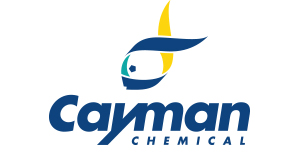Ebola Virus Envelope Glycoprotein GP1 Subunit (subtype Bundibugyo, strain Uganda 2007) (recombinant)
Ebola Virus Envelope Glycoprotein GP1 Subunit (subtype Bundibugyo, strain Uganda 2007) (recombinant)
SKU
CAY41066-100
Packaging Unit
100 µg
Manufacturer
Cayman Chemical
Availability:
loading...
Price is loading...
Formulation: Lyophilized from sterile 20 mM Tris, with 500 mM sodium chloride, and 10% glycerol, pH 7.4
Purity: ≥95% estimated by SDS-PAGE
Formula Weight: 0
Shelf life (days): 365
Notes: Ebola virus (EBOV) is an enveloped and negative-stranded RNA virus, a member of the Ebolavirus genus, and the causative agent of Ebola virus disease (EVD), a condition characterized by a hemorrhagic fever and a high mortality rate, that is endemic to western and equatorial Africa.{69796} The single-stranded RNA genome of EBOV encodes seven proteins: nucleoprotein (NP), virion protein 40 (VP40), VP35, VP30, VP24, glycoprotein (GP), and an RNA-dependent RNA polymerase (L).{69796,69797} EBOV envelope GP is a class I fusion protein involved in viral attachment and entry to host cells.{69798} It is composed of two subunits, GP1 and GP2, which are separated by a furin cleavage site and linked via disulfide bonds to form trimers of heterodimers with a chalice and cradle-like structure.{69799,69798,69800} EBOV GP is covered with N- and O-linked glycans, and the GP1 subunit is composed of a signal peptide, base, and head domains, a glycan cap, which shields the receptor-binding site, and a mucin-like domain, which is heavily glycosylated with O-linked glycans.{69799,69798} The GP1 subunit is involved in host cell attachment, and cleavage of the glycan cap and mucin-like domain by host cathepsin B, with cathepsin L in an accessory role, is required for binding to the host cell.{69798,69801} Once fused, the EBOV virion enters the cell via macropinocytosis and is transported to the endosome. The glycosylation of the glycan cap and dense glycosylation of the GP1 mucin-like domain shield surface epitopes and prevent neutralizing antibodies from interacting with regions required for host cell binding, fusion, and entry.{69802,69800} Cayman's Ebola Virus Envelope Glycoprotein GP1 Subunit (subtype Bundibugyo, strain Uganda 2007) (recombinant) protein consists of 480 amino acids, has a calculated molecular weight of 53.5 kDa, and a predicted N-terminus of Ile33 after signal peptide cleavage. By SDS-PAGE, under reducing conditions (if applicable), the apparent molecular mass of the protein is approximately 75 kDa due to glycosylation.
Purity: ≥95% estimated by SDS-PAGE
Formula Weight: 0
Shelf life (days): 365
Notes: Ebola virus (EBOV) is an enveloped and negative-stranded RNA virus, a member of the Ebolavirus genus, and the causative agent of Ebola virus disease (EVD), a condition characterized by a hemorrhagic fever and a high mortality rate, that is endemic to western and equatorial Africa.{69796} The single-stranded RNA genome of EBOV encodes seven proteins: nucleoprotein (NP), virion protein 40 (VP40), VP35, VP30, VP24, glycoprotein (GP), and an RNA-dependent RNA polymerase (L).{69796,69797} EBOV envelope GP is a class I fusion protein involved in viral attachment and entry to host cells.{69798} It is composed of two subunits, GP1 and GP2, which are separated by a furin cleavage site and linked via disulfide bonds to form trimers of heterodimers with a chalice and cradle-like structure.{69799,69798,69800} EBOV GP is covered with N- and O-linked glycans, and the GP1 subunit is composed of a signal peptide, base, and head domains, a glycan cap, which shields the receptor-binding site, and a mucin-like domain, which is heavily glycosylated with O-linked glycans.{69799,69798} The GP1 subunit is involved in host cell attachment, and cleavage of the glycan cap and mucin-like domain by host cathepsin B, with cathepsin L in an accessory role, is required for binding to the host cell.{69798,69801} Once fused, the EBOV virion enters the cell via macropinocytosis and is transported to the endosome. The glycosylation of the glycan cap and dense glycosylation of the GP1 mucin-like domain shield surface epitopes and prevent neutralizing antibodies from interacting with regions required for host cell binding, fusion, and entry.{69802,69800} Cayman's Ebola Virus Envelope Glycoprotein GP1 Subunit (subtype Bundibugyo, strain Uganda 2007) (recombinant) protein consists of 480 amino acids, has a calculated molecular weight of 53.5 kDa, and a predicted N-terminus of Ile33 after signal peptide cleavage. By SDS-PAGE, under reducing conditions (if applicable), the apparent molecular mass of the protein is approximately 75 kDa due to glycosylation.
| SKU | CAY41066-100 |
|---|---|
| Manufacturer | Cayman Chemical |
| Manufacturer SKU | 41066-100 |
| Package Unit | 100 µg |
| Quantity Unit | STK |
| Product information (PDF) | Download |
| MSDS (PDF) |
|

 Deutsch
Deutsch










